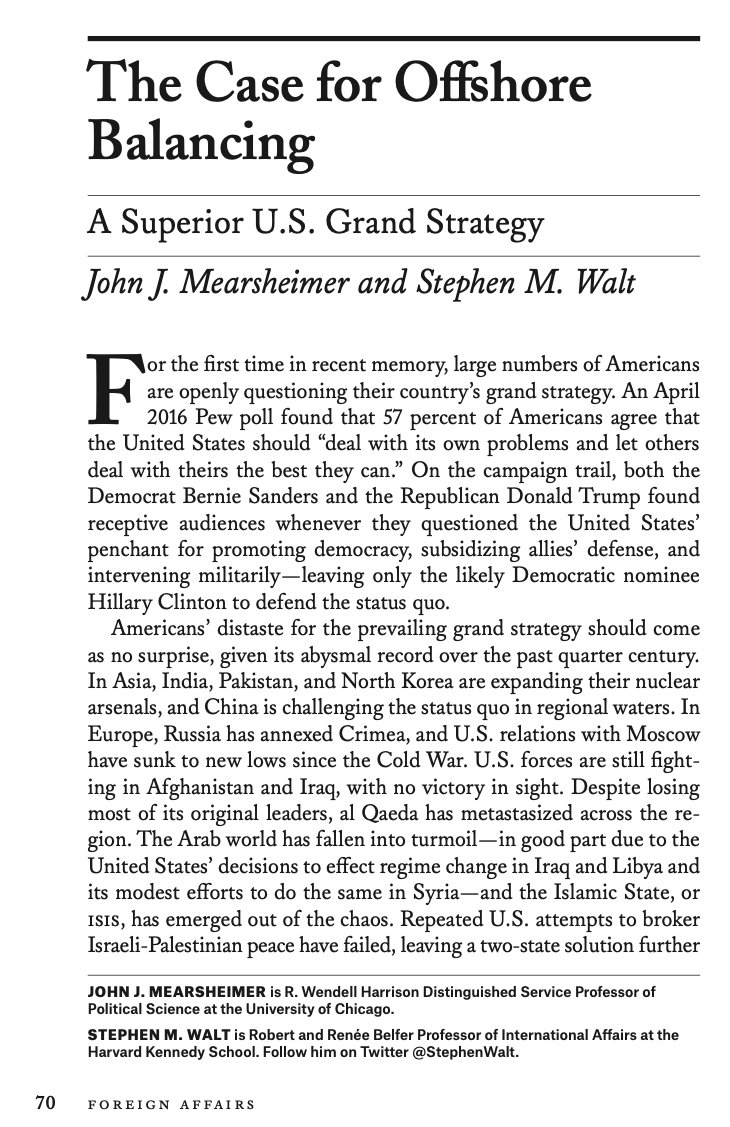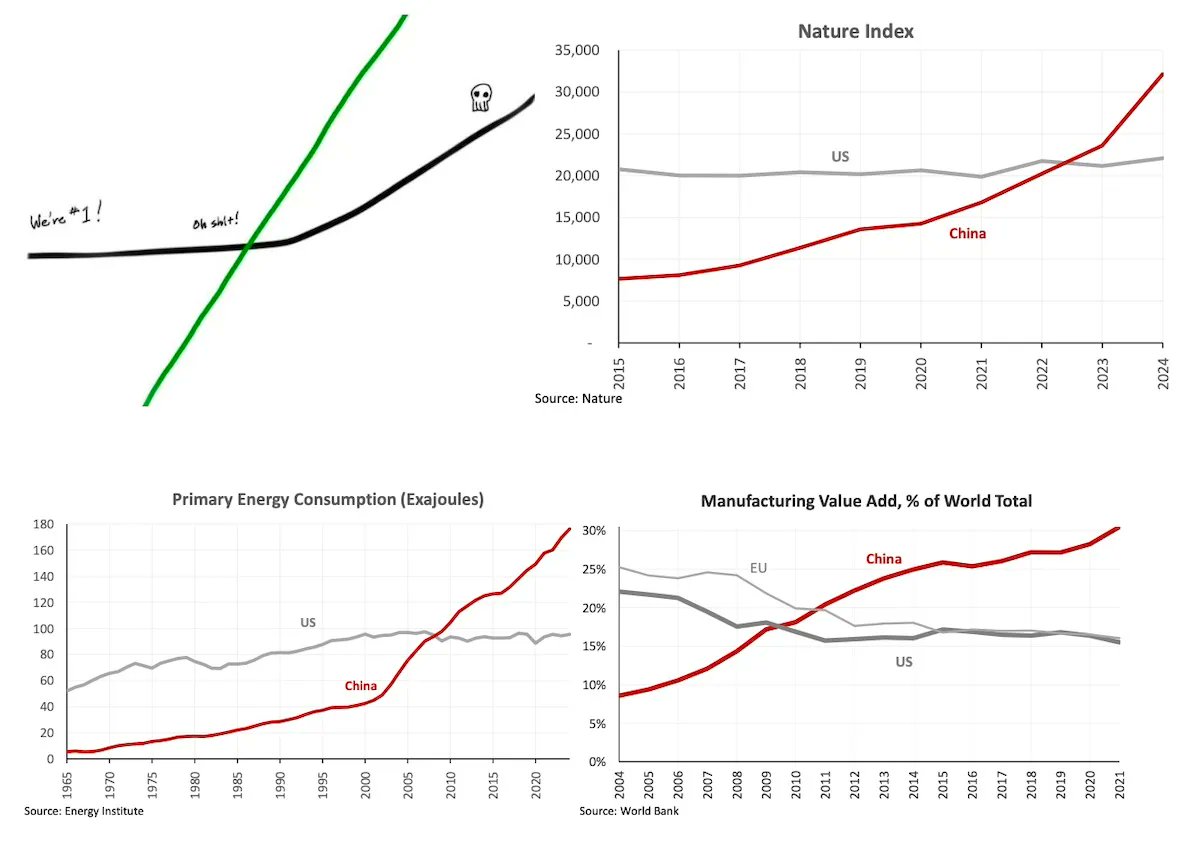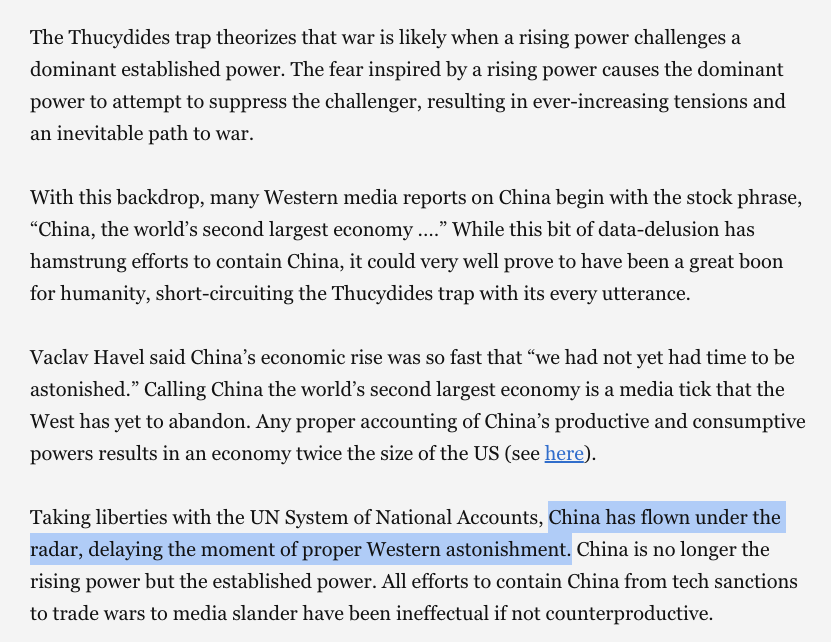This article by Mearsheimer and @stephenWalt from 2016 holds up well.
I think they'll eventually win the argument as the US, by necessity, moves away from what they term liberal hegemony and towards offshore balancing.
I do have two thoughts, though… 🧵
mearsheimer.com/wp-content/upl…

I think they'll eventually win the argument as the US, by necessity, moves away from what they term liberal hegemony and towards offshore balancing.
I do have two thoughts, though… 🧵
mearsheimer.com/wp-content/upl…


First, there is actually a structural similarity between liberal hegemony and offshore balancing.
The entire NGO industrial complex doesn't want poor countries to become wealthy. In fact, it hates those who become truly independent via capitalism.
They want pets, not partners.
The entire NGO industrial complex doesn't want poor countries to become wealthy. In fact, it hates those who become truly independent via capitalism.
They want pets, not partners.

NGOs do have a self-interest, but it's undeclared. Their self interest is in being seen as saviors.
The alternative approach? Invest in the ascending world. Shared *risk* and reward. Capitalism is for equals, equal partners in the deal. @mwiyas @iaboyeji
priceonomics.com/what-happened-…
The alternative approach? Invest in the ascending world. Shared *risk* and reward. Capitalism is for equals, equal partners in the deal. @mwiyas @iaboyeji
priceonomics.com/what-happened-…
What's the key difference between investment & NGO-style charity?
With investment, the recipient can become *richer than* the investor. This is actually the best outcome. And from this, true self-sufficiency & independence.
By contrast, NGOs mean perpetual dependence.
With investment, the recipient can become *richer than* the investor. This is actually the best outcome. And from this, true self-sufficiency & independence.
By contrast, NGOs mean perpetual dependence.
So, in this respect, the current NGO model actually *does* have an aspect of offshore balancing to it.
It keeps the ascending world from rising, and then attacks those that manage to rise anyway.
It's humanitarian in optics, but (arguably) realpolitik in substance.
It keeps the ascending world from rising, and then attacks those that manage to rise anyway.
It's humanitarian in optics, but (arguably) realpolitik in substance.
We can understand this via the fictional Diana Moon Glampers.
The power to make everyone "equal" is in fact highly unequally distributed, and this is the whole point.
The Handicapper General makes sure no one rises above the Handicapper General.
litcharts.com/lit/harrison-b…
The power to make everyone "equal" is in fact highly unequally distributed, and this is the whole point.
The Handicapper General makes sure no one rises above the Handicapper General.
litcharts.com/lit/harrison-b…

Now to the second point, shorter this time.
While many of the liberal hegemons abuse the *language* of human rights, democracy, and rule of law to justify what is in reality a half-NGO half-neocon form of neocolonialism...that does not mean these ideas have no merit.
While many of the liberal hegemons abuse the *language* of human rights, democracy, and rule of law to justify what is in reality a half-NGO half-neocon form of neocolonialism...that does not mean these ideas have no merit.
The alternative approach is to stop entrusting the protection of human rights to NGOs, neocons, and their proselytizing surveillance state…and to move instead towards internationally transparent networks, with both algorithmic & human checks and balances.
bariweiss.substack.com/p/is-bitcoin-a…
bariweiss.substack.com/p/is-bitcoin-a…
Why bracket NGOs and neocons, btw? Aren't they implacably opposed to each other?
In theory. In practice, the hard power allows soft power to get boots on the ground, and vice versa. The warriors & priests support each other, even if they don't realize it.
In theory. In practice, the hard power allows soft power to get boots on the ground, and vice versa. The warriors & priests support each other, even if they don't realize it.
https://twitter.com/balajis/status/1449937121892978691
OK, wrapping up.
To summarize, the US likely will move towards a more realistic foreign policy. Something like offshore balancing, not liberal hegemony.
But the ideals the US arguably once protected & now does not aren't abandoned. They live on on-chain. foreignpolicy.com/2021/12/11/bit…
To summarize, the US likely will move towards a more realistic foreign policy. Something like offshore balancing, not liberal hegemony.
But the ideals the US arguably once protected & now does not aren't abandoned. They live on on-chain. foreignpolicy.com/2021/12/11/bit…
• • •
Missing some Tweet in this thread? You can try to
force a refresh

















